Artists
Source Material: From Ancient Caves to the Sydney Opera House With Artist Oliver Beer
The artist reveals the sound-gathering that goes into his art-making.
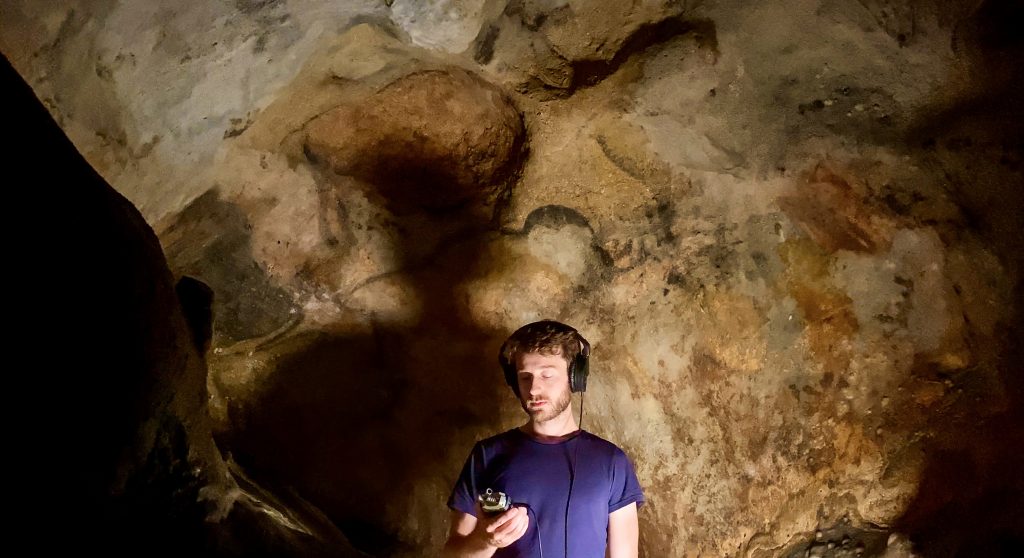
Oliver Beer’s work sounds great—and not just when you hear about it. The English artist’s practice is deeply based in sound; he employs sonic vibrations to make hands-free paintings, and he draws out the natural resonance in spaces small and large to create his works. These often involve work far away from the studio. For his ongoing Resonance Project, started in 2007, he invites singers to perform in a way that calls forth the natural harmonics of architectural spaces. Below, the artist reveals the sound-gathering that goes into his art-making—work that takes him from Paleolithic caves to Brighton’s sewers.
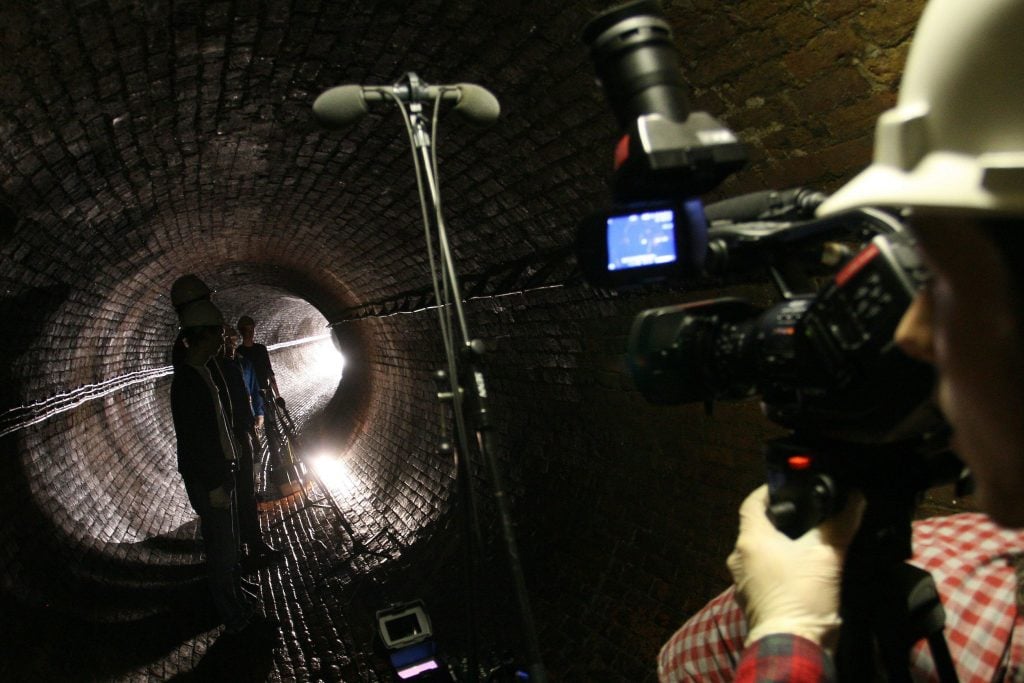
Filming The Resonance Project: Deep and Meaningful in the Brighton Sewers in 2010.
In each of these pictures you see me exploring the acoustics of an architectural space, a natural space, or a vessel. I’ve always had an intense sensitivity to sound and harmony, and I’ve always been able to hear the key of a room. Just like a wine glass can be made to sing or a seashell has a sound even though it’s inanimate, a room has its unique acoustic fingerprint. Since I was a kid, I’ve also been able to sing to a room in such a way that the room will sing back to me much louder than I’m singing to it.
This has been called the Resonance Project. The reason that it is so amazing is that every single space has its own harmony, and every single singer that I bring into these spaces has their own musical fingerprint, and when you bring architecture and singers together in a duet between a body and a space, something magical happens. It creates fiction between this universal thing, this quality of resonance, and this unique thing, an individual musician with a musical tradition and life story and their own personal relationship to music.
In the oldest image, from 2009, I’m making a film in the sewers. Deep and Meaningful was one of the earliest Resonance Project films. You can imagine that the sewer is just a vast organ pipe underground. I had already found the note that it sings and I’m working with singers to stimulate that space to sing and to create a duet between the singers and that space.
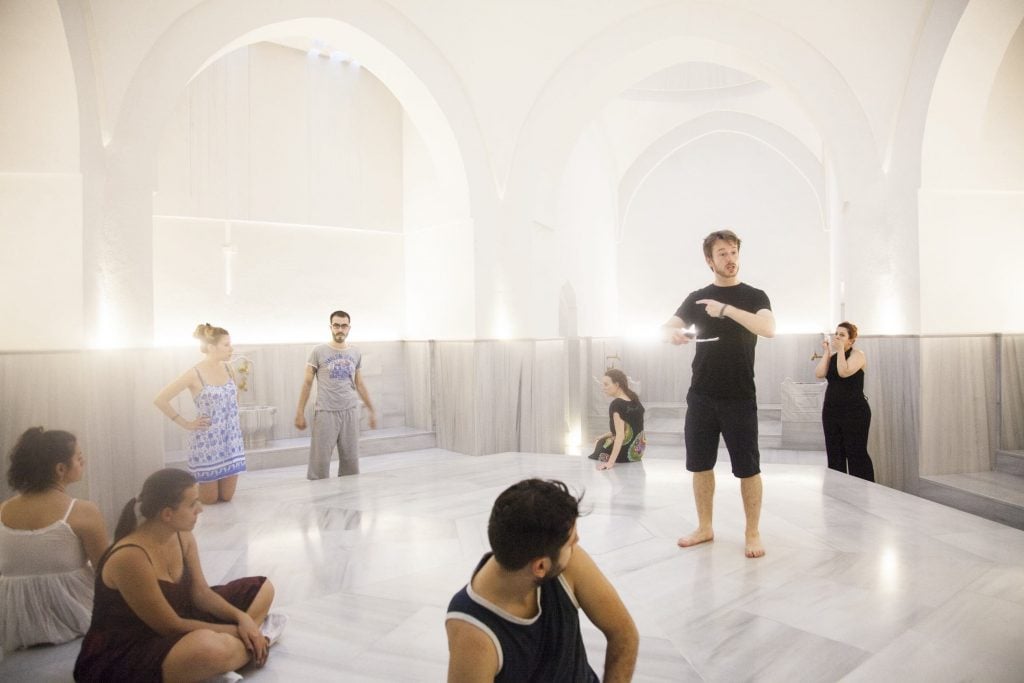
Oliver Beer, rehearsing for The Resonance Project: Call to Sound at the Kılıç Ali Paşa Hamam in Istanbul for the Istanbul Biennale in 2015.
In the second photo you see me in Istanbul, where I worked with Turkish singers to stimulate the resonant frequencies of a hamam by Sinan, a very famous Ottoman architect, to turn the whole space into this resonating instrument. That was an incredible experience. It lasted only one night, for the Biennial in 2015, and it was so intense because we had two sets of singers because of the heat. The music of that room was brought out of the walls in a very unique and fleeting combination because those singers brought their music to the composition. I studied musical composition before I studied art, so I often write music for these spaces.
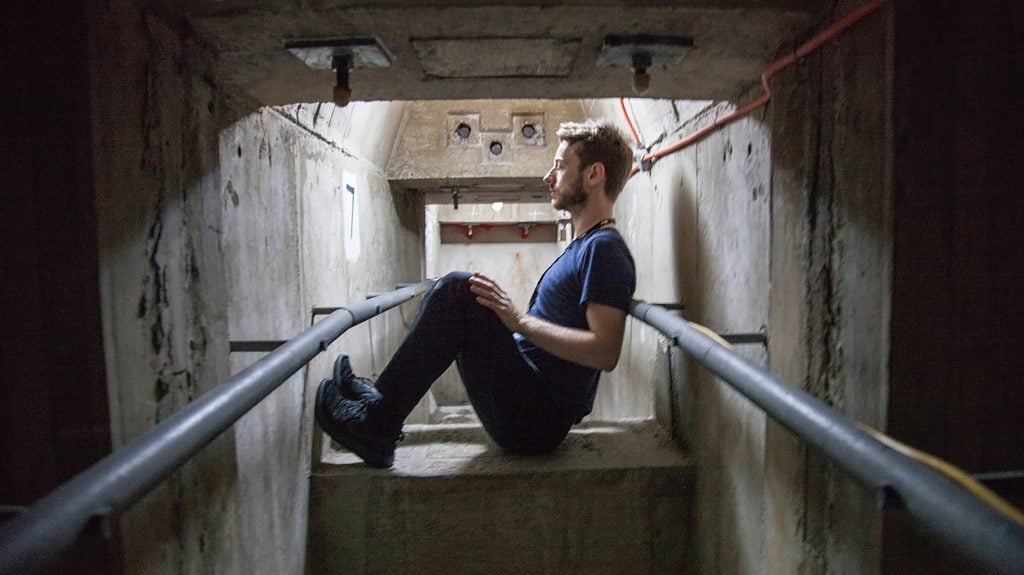
Oliver Beer, testing the acoustics of the highest point of the highest roof in the Sydney Opera House, for the Sydney Biennale.
And then you can see me in the concrete tip of the highest point of the Sydney Opera House. That was a project for the Sydney Biennial where I was offered the entire opera house as my resonant instrument. I was able to tune the whole building, marking on a map and even on the building the notes that the building would sing. I had to crawl up the spine, this column of space that goes all the way up to the top. I worked with Australian singers on that project, which brought Aboriginal, Chinese, and Christian music into the compositions that I was forming from the found music that the singers brought with them.
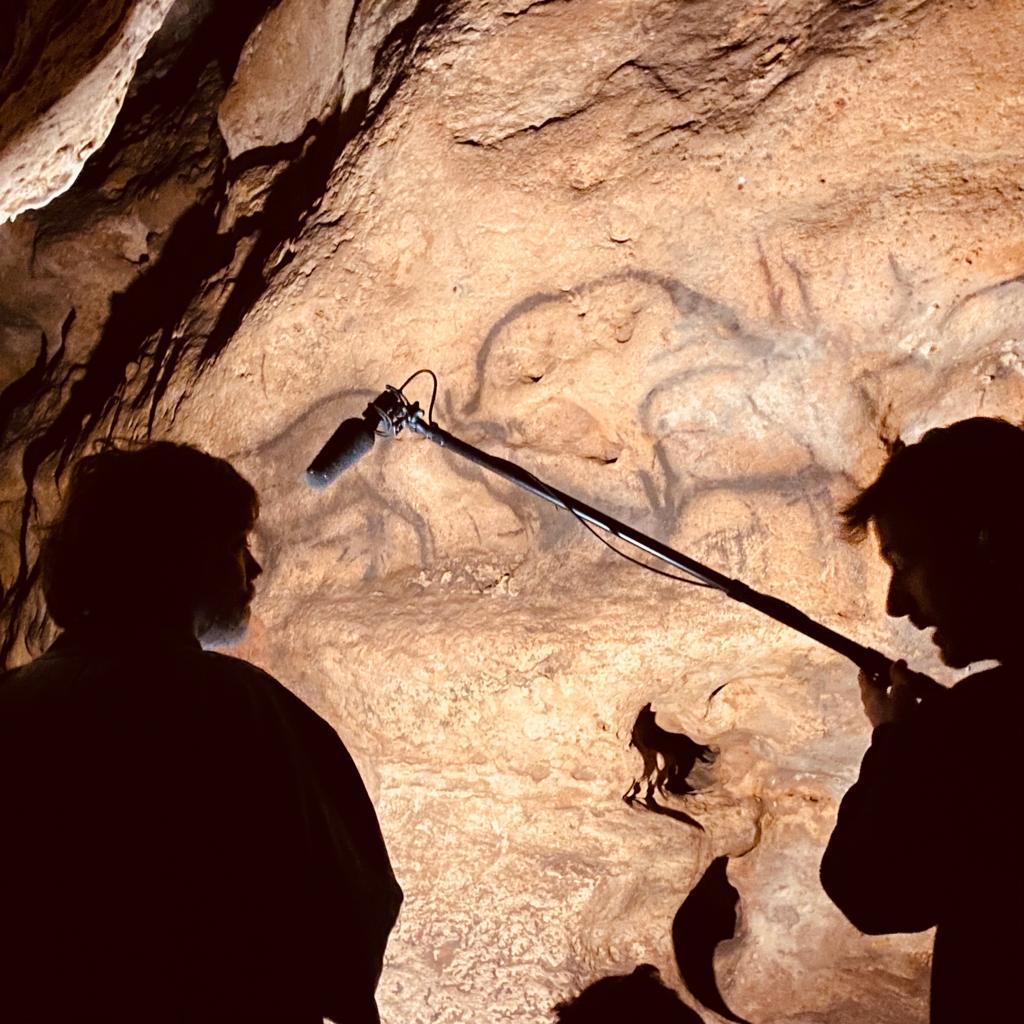
Filming Resonance Cave featuring Rufus Wainwright in the Paleolithic caves of Dordogne in 2023.
You see me also listening to the sounds of a Paleolithic cave in the South of France. This was one of the most important projects of my life, because I discovered a relationship between where the paintings are and where the resonant frequencies of the cave can be found. It’s very likely that they were singing these very notes 20,000 years ago. I’m currently developing this project, which will be like a video opera.

Filming Resonance Cave featuring Rufus Wainwright in the Palaeolithic caves of Dordogne in 2023.
You also see me listening to a vessel at the Metropolitan Museum of Art in New York. Between 2016 and 2019, the Met gave me access to the entire collection and allowed me to listen to all of the vessels and find 32 that would sing perfectly in harmony. I went through the whole museum listening to every object. The Met is like a huge instrument waiting to be played. It’s full of hundreds of thousands of vessels, so I was able to create my vessel orchestra from that process. I had an exhibition at the Met Breuer and many concerts in 2019.
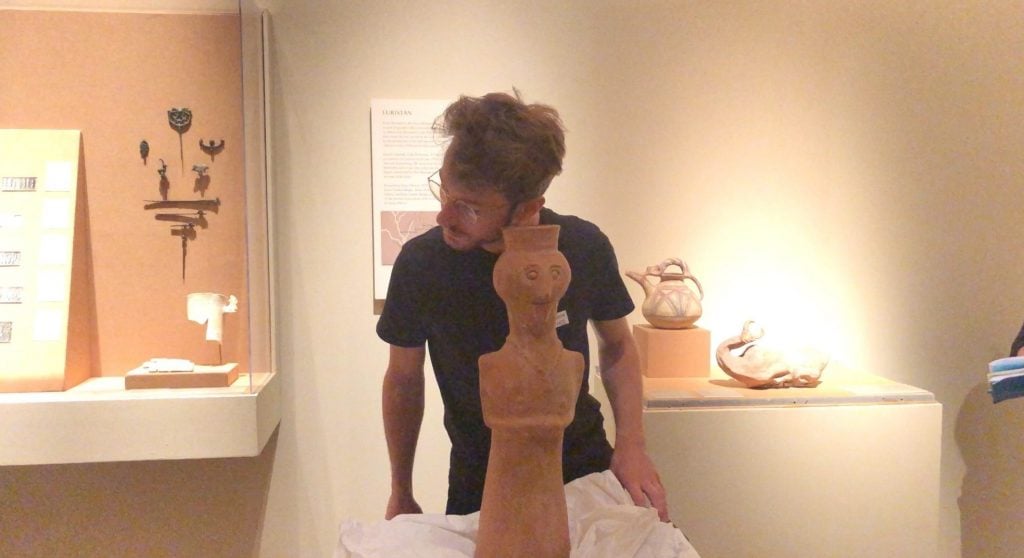
Oliver Beer, listening to vessels at the Metropolitan Museum of Art, for Vessel Orchestra in 2019. Courtesy the artist.
All these are places that have got some incredible acoustic quality, or even a very humble acoustic quality, which can be teased out of the walls.
The really incredible thing is that no potter and no architect is taught that when they make a pot or when they make a building, they’re actually building musical harmonies. And yet, it’s physically impossible to make a pot without making a note and it’s physically impossible to build a room without building a musical note.
Beer’s exhibition “Resonance Paintings – Cat Orchestra” is on view at Almine Rech Tribeca through April 27. He will present a new solo show, “Beginner’s Luck,” at Tao Art, Taipei City, May 8-July 14. La Biennale de Lyon in France will host the world premiere of his new video opera, shot in decorated prehistoric caves, September 21, 2024-January 5, 2025.
Welcome to Source Material, where artists share their creative journeys beyond the confines of the studio. From hunting down frescos in Florence to chasing storms in Cornwall, we explore the eclectic sources of inspiration that fuel artists’ imagination.





